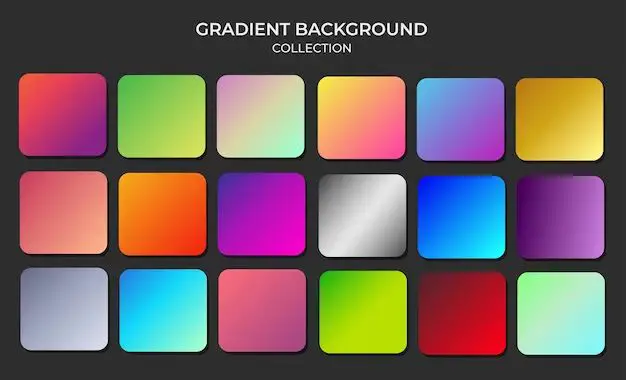Bright and vibrant are two words that are often used interchangeably to describe colors or patterns that are striking, vivid, and eye-catching. However, while they have similar meanings, there are some key differences between the definitions of “bright” and “vibrant” that make them not completely synonymous. Let’s take a closer look at what each word means and how they compare.
What Does Bright Mean?
The adjective “bright” is used to describe colors or objects that strongly reflect light, are shiny, luminous, or radiant. Something described as bright will have a bold, intense color or sheen. Bright colors and patterns tend to attract attention due to their high saturation, lightness, and reflectiveness.
Here are some key things to know about the definition of bright:
– Reflects or emits a lot of light
– Well-illuminated, luminous
– Having a strong, vivid color
– Shiny, glossy, or brilliant sheen
– Catching the eye due to intensity of hue
For example, a bright red shirt, bright yellow pants, or a bright pink tie would all have deeply saturated, eye-catching hues. Bright tends to imply colors on the lighter end of the spectrum that appear to “glow” or “shine.” Pastels, neon shades, highlighter colors, metallic finishes, and glittering objects can all be described as bright.
What Does Vibrant Mean?
The adjective “vibrant” is used to describe colors, patterns, or things that are strikingly rich, lively, intense, and brilliant. Vibrant implies a certain energy, dynamism, and boldness.
Here are some key aspects of the definition of vibrant:
– Rich, deep color saturation
– Having exceptional brilliance or luminosity
– Dynamic, bold, and attention-grabbing
– Energetic, lively, animated
– Exuding a sense of movement or vigor
For example, a vibrant red, vibrant turquoise, or vibrant floral print would all make a strong visual impact with their deeply saturated hues. Vibrant can imply a wider range of colors including richer, darker shades. Where bright often relates to lightness and reflectivity, vibrant focuses more on the depth and dynamism of color.
Bright vs. Vibrant – The Key Differences
Bright and vibrant are similar in that they both describe colors, patterns, and objects that are striking and eye-catching. However, some key differences include:
Lightness
Bright usually implies lighter, more luminous colors from the lighter end of the color spectrum. Vibrant can describe darker, richer shades as well.
Saturation
While both words relate to bold, intense color, bright specifically implies colors with higher saturation, whereas vibrant focuses more on depth of tone.
Reflectiveness
Bright suggests colors and objects with a luminous, shining, or glistening quality, while vibrant does not necessarily relate to reflectiveness.
Energy
Vibrant conveys a sense of dynamism, movement, and liveliness. Bright focuses more on luminosity than energy.
| Bright | Vibrant |
|---|---|
| Lighter, luminous colors | Richer, deeper shades |
| High color saturation | Depth of color tone |
| Shiny, glistening quality | Not necessarily reflective |
| Focuses on luminosity | Conveys energy and dynamism |
When to Use Bright vs. Vibrant
Because of their subtle differences, bright and vibrant tend to describe somewhat different color palettes and visual effects. Here are some guidelines on when to use each word:
Use bright to describe:
– Light, neon, or pastel colors
– Metallic or glittering objects
– Colors with high saturation and lightness
– Shiny, luminous, or glistening finishes
– Colors/patterns that seem to “glow” or “shine”
Use vibrant to describe:
– Deep, jewel-toned colors
– Richer, darker saturated shades
– Energetic, lively colors and patterns
– Colors with exceptional brilliance
– Objects or colors full of dynamism and vigor
Examples
Bright pink, bright blue, bright yellow
Bright metallic accessories, bright glittering decoration
Bright saturated spring colors, bright neon signs
Vibrant emerald green, vibrant turquoise, vibrant magenta
Vibrant floral patterns, vibrant exotic textile prints
Vibrant energy, vibrant dancing, vibrant rhythm
Using Bright and Vibrant Together
Since bright and vibrant don’t mean exactly the same thing, they can often be used together to describe something that incorporates both qualities, for example:
– A bright and vibrant painting with luminous pastels and deep jewel tones
– A woman wearing a vibrant red dress with bright silver jewelry
– A garden with bright yellow tulips and vibrant crimson roses
– A music festival with a bright, shining main stage and vibrant crowds dancing energetically
Using both words together implies that an object/color/pattern combines intensely illuminated hues with deep, rich color saturation for maximum visual impact.
Conclusion
In summary, while bright and vibrant are similar descriptives, bright relates more to lightness, saturation, and reflectivity while vibrant focuses on depth, brilliance, and energetic dynamism. Bright usually describes lighter or paler colors while vibrant can describe richer, darker shades. Something bright will have a shiny, luminous quality while something vibrant exudes vigor and intensity. Using both together implies an eye-catching combination of light, saturated colors and deep, brilliant hues.


